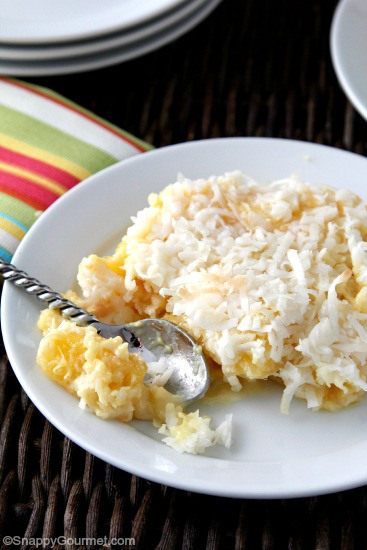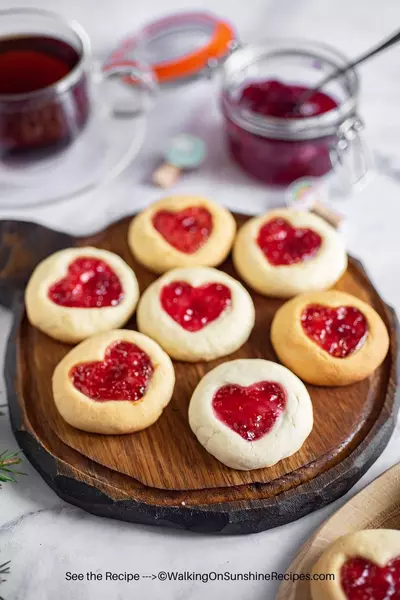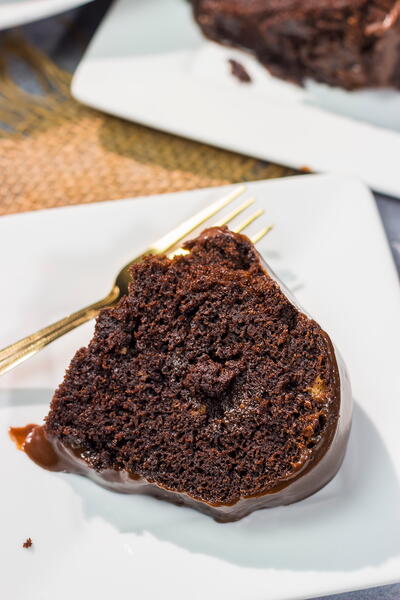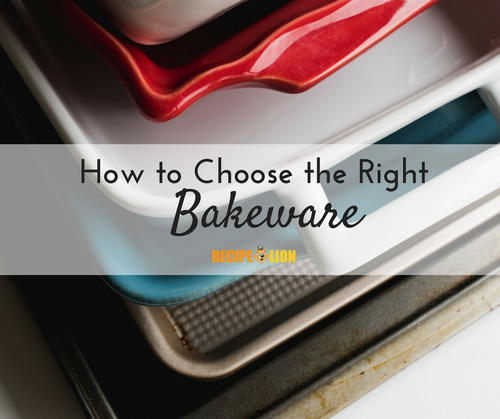
Whether you cling to your glass baking pans or you're a ceramic stoneware aficionado, there's no denying the importance of using the right type of bakeware. When it comes to perfecting your favorite homemade desserts, sometimes choosing the right type of baking pan can be just as important as following the recipe!
Although you can bake just about anything in any type of bakeware, some types lend themselves better to certain dishes. Factors like size, shape, volume, and material of the dish can affect how your desserts turn out.
The best baking advice in just about any situation is to simply follow the recipe as closely as you can; the baking temperatures and dish sizes are carefully thought out to give you the best results every time. But what happens when you don't have that 9 x 13-inch, dark glass baking dish? Can you simply switch it out for a metal dish or a light glass dish? The answer is probably yes, but you'll probably need to make some adjustments to your recipe to make it work.
Cheat Sheet: How to Choose the Right Bakeware
Keep this info handy! The next time you're baking, and you can't decide which dish to use, print off this infographic, stick it on your fridge, and you'll be set.
Click here to get this infographic
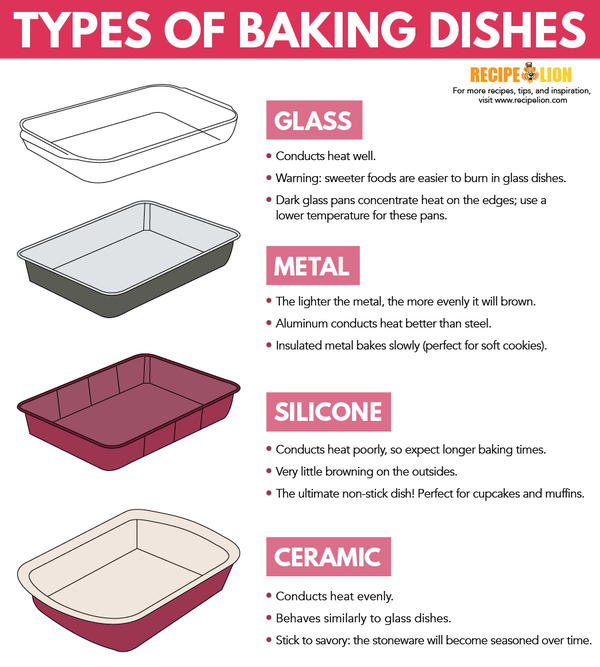
Glass Baking Dishes
Glass bakeware is probably going to be your go-to for most recipes. And that’s for a good reason: it's good at conducting heat. Almost too good, actually. Sometimes -- especially at higher temperatures -- the glass can act as a magnifying glass, baking your sweet treats faster than you might expect.
The benefit to this is that your desserts will bake more evenly than in metal pans, but things can quickly go wrong. It's much easier to burn or over bake desserts in glass pans. As a rule of thumb, it's probably best to save your glass bakeware for savory dishes, like casseroles.
Note: Glass bakeware should not be used on the stove or in the broiler. Putting glass in direct contact with heat can cause it to break.
Dark Glass Pans vs. Light Glass Pans
You've probably encountered a recipe that has different baking instructions for dark glass pans than for light glass pans. That's because the darker the glass is, the more it concentrates the heat at the edges of the pan.
If you were to follow the instructions for a light glass baking dish for dark glass, you would end up with cakes, brownies, and cookie bars that are burnt on the outside and underbaked on the inside. But as long as you follow the instructions carefully, your sweet treats should come out just fine.
To convert metal bakeware recipes for glass bakeware: Simply lower the recommended temperature by 20-25 degrees, and check your baked goods a little earlier than what the instructions indicate.

Metal Baking Dishes
Metal baking dishes are probably the most common type of bakeware. They're versatile, easy to clean, and they're great for baking things like quick breads, muffins, and other sweet treats.
But pay attention to what kind of metal baking dish you have. Most metal dishes fall into four categories, and all of them will behave in slightly different ways in the oven. Much like with glassware, the lighter the metal is, the more evenly it will brown your baked goods.
1. Aluminum and Anodized Aluminum Bakeware
Aluminum is by far the most common metal used for metal bakeware. It's great at baking things evenly, especially desserts. It's also very lightweight and will probably last you a long time. The major downside to using aluminum bakeware is that it can easily degrade when in prolonged contact with highly acidic foods, like tomatoes and citrus fruits. It's probably best to save your aluminum bakeware for desserts.
One of the major criticisms of aluminum bakeware is that particles from the aluminum can sometimes leak into your food. That's where anodized aluminum comes in. Anodization is a process that coats aluminum in various solutions, giving the bakeware a surface that is non-stick and easy to clean. Plus, the chance of particles contaminating your food is much lower with anodized aluminum!
2. Stainless Steel and Tinned Steel Bakeware
Stainless steel has what's called a non-reactive surface. This makes stainless steel bakeware incredibly versatile, durable, and great for baking just about any dessert imaginable. Much like aluminum, stainless and tinned steel baking pans are better suited for dishes that have low acidity and salt content.
Tinned steel basically means these dishes have a steel center that is coated in tin. These dishes are great at conducting heat, but, like most metal baking dishes, bake slowly. But be warned: when using these dishes, be on the lookout for rust. Unlike most other metals used for bakeware, tin can rust. The best way to avoid this is to dry your tinned steel thoroughly after washing.
3. Copper Bakeware
Copper bakeware is famous for how well it conducts heat. This high-quality material will give you great results almost every time, but it comes at a cost -- copper bakeware is very expensive, especially high-quality French copper bakeware. Like other types of bakeware, copper doesn't do well with highly acidic foods.
4. Cast Iron Bakeware
Cast iron is affordable, and it only gets better with age! The most popular type of cast iron bakeware is the cast iron skillet, but you can get just about any shape of bakeware in cast iron. As long as you care for your cast iron and season it properly, you won't have to worry about the metal reacting with the food. Many people buy cast iron because of its rustic aesthetic.
To convert glass bakeware recipes for metal bakeware: Because metal bakes food more slowly, just raise the recommended temperature for glass bakeware by 15-20 degrees. Depending on the oven, your sweet treats will still probably take longer to bake than what the recipe says, but keep a close eye on your oven. No one wants a burnt dessert!

Silicone Baking Dishes
Silicone baking dishes are very handy to have around for those specialized baking projects. Often silicone is used to make molds for oddly shaped cakes or jellos, and they're useful because silicone is the ultimate nonstick material.
Because silicone is very durable, it's great for desserts that need a little time in the fridge or freezer; they can handle bigger changes in temperature than most other types of bakeware.
The biggest downside to using silicone is that it doesn't conduct heat very well. This means your desserts will not brown very much on the outside, but that might be just what you are looking for.
Ceramic Stoneware Baking Dishes
Ceramic stoneware is really the best option for baking things evenly. It behaves similarly to glass, so it's probably best to stick to more savory dishes, although desserts muffins and quickbreads do well in stoneware.
Note: Be careful how you store these dishes. Stoneware doesn't do well with quick, dramatic changes in temperature; it can sometimes break. Store at room temperature, and never move stoneware directly from the oven to the refrigerator or freezer.
Glazed vs. Unglazed Stoneware
For the most part, there is no real difference between how glazed and unglazed stoneware behave in the oven. The real difference between the two is in appearance and maintenance. Glazed stoneware has a more polished appearance, whereas unglazed dishes usually have a more rustic appearance.
Unglazed stoneware should be also be seasoned; over time, as your stoneware is used with highly fatty foods, it will continue to season and turn a dark brown color. When it comes to cleaning your stoneware, you should never use soap on unglazed dishes. The soap can get into the pores in the surface of the stone and destroy the layer of seasoning.

Cast Iron Skillets: The Holy Grail of Bakeware
Cast iron skillets are the holy grail of bakeware. They're truly are the ultimate kitchen utensil! They have the versatility of metal, the reliability of glass, and produce the quality of flavor from ceramic stoneware.
Just make sure you season your cast iron skillets are seasoned properly. Doing this will prevent the metal from reacting with your food; plus, it makes it much easier to clean.
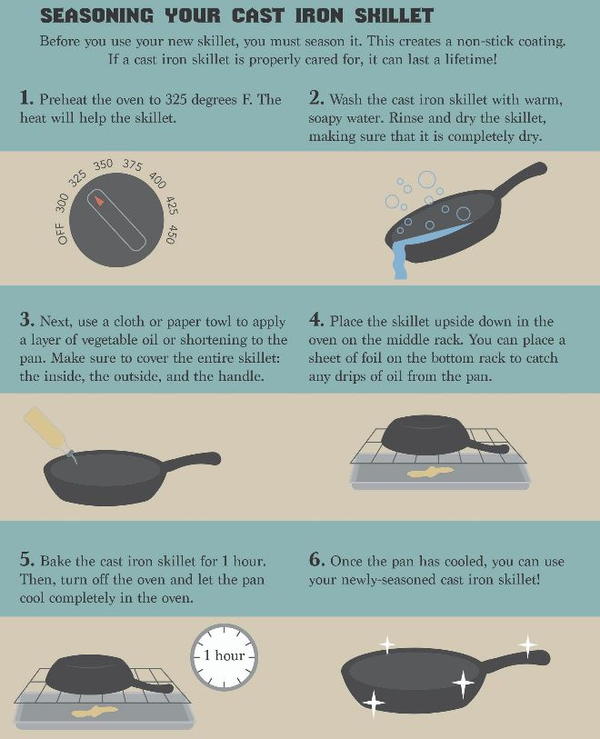
What's your go-to bakeware?
Let us know in the comments!
Eugenia
Sep 01, 2017
This is such a helpful guide! I usually also use metal for baking, but that's just because I only have metal pans.
Laura P
May 17, 2017
I am definitely a beginning baker; so, I am saving this awesome page for reference! I usually use metal baking sheets for cookies. I can't wait to hear other readers' advice on their go-to bakeware!
Report Inappropriate Comment
Are you sure you would like to report this comment? It will be flagged for our moderators to take action.
Thank you for taking the time to improve the content on our site.

